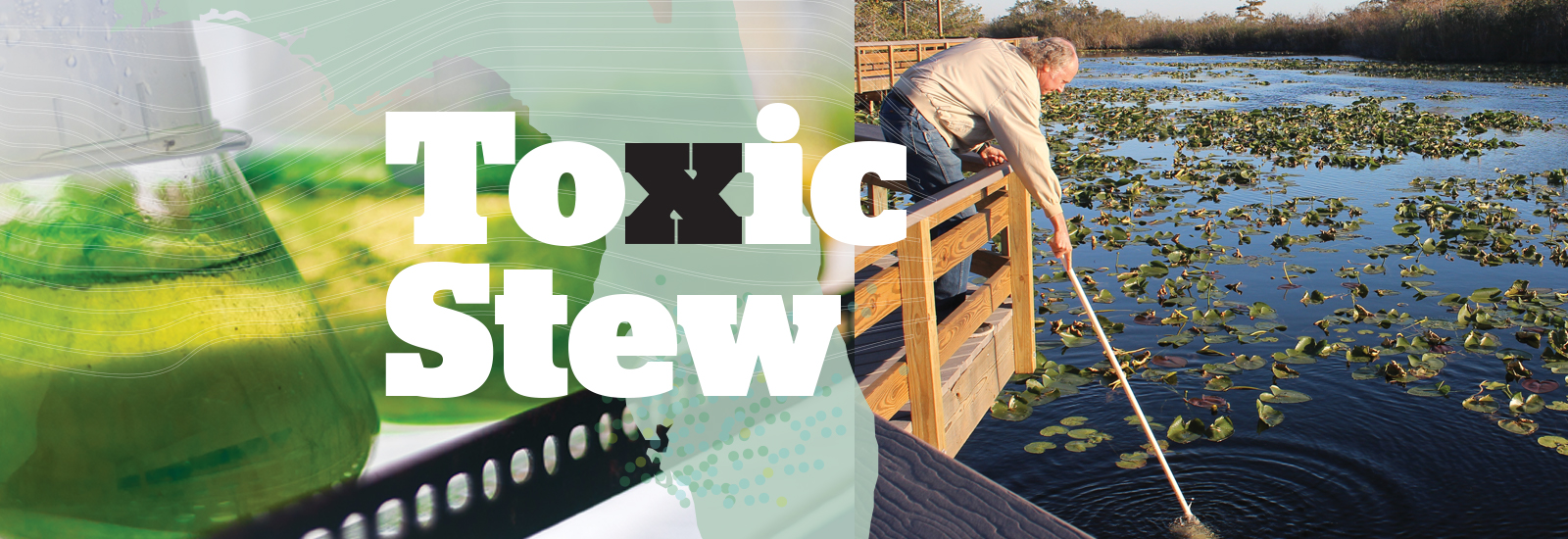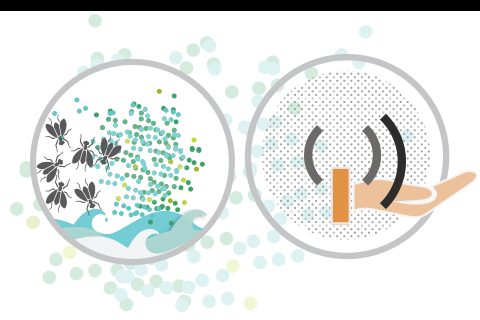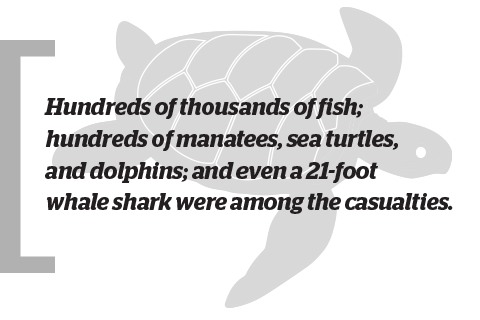Volume 25 Number 1 | Spring 2019
by Robert C. Jones Jr.
Many South Floridians gripe with good reason about their stressful, time-consuming work commutes. But few can match the one made by Larry Brand, professor of marine biology and ecology in the Rosenstiel School of Marine and Atmospheric Science, multiple times last year. It wasn’t just the distance—a drive of two and a half hours or more from his South Miami home—but what awaited the phytoplankton ecologist when he arrived at his destination: foul hotspots of the toxic algae bloom outbreak that afflicted Florida for more than 10 months.
Beginning a typical day at the Caloosahatchee River, just outside the city of Fort Myers, Brand would submerge a one-liter bottle attached to a makeshift PVC pole to draw a sample of the turbid water. Capping the bottle, he would move on to several other affected bodies of water from Lake Okeechobee to Florida Bay, repeating the ritual at each site before heading home as the sun sank in the west.
Back in his Rosenstiel School lab on Virginia Key, Brand and his colleagues would culture and measure the water samples for levels of harmful algae. And then, for months on end, it was
rinse and repeat.
Throughout the year, the toxic algae Karenia brevis caused the worst red tide along Florida’s southwest coast in more than a decade, darkening Gulf of Mexico waters, killing marine life, and triggering respiratory distress and other ailments in locals and tourists. Karenia brevis can cause gastrointestinal and neurological disorders that develop within minutes, hours, or days after exposure.
Meanwhile, freshwater blue-green cyanobacteria algae coated the Caloosahatchee and St. Lucie rivers and other freshwater canals. What that means for the residents’
long-term health remains unclear. But Brand is among a group of University of Miami scientists who are pooling their perspectives to find out.
The multidisciplinary team of biomedical researchers, ocean and atmospheric scientists, and engineers received Phase II funding for their Integrating Oceans and Human Health Sciences project via U-LINK (the University of Miami Laboratory for Integrative Knowledge) initiative.
“With the exception of brevetoxin (produced by the Florida red tide), little is known about the health effects of breathing aerosols with other algal toxins in them,” the team noted in its U-LINK proposal. “Our findings will be used to help devise strategies to lower risks.”
Many, many Floridians live near canals”, Brand says, “and a lot of the blue-green algae gets blown by the wind into these dead end waterways.
TOXIC IMBALANCE
Despite their often disastrous effects on the environment, algae are, in one sense, “the good guys,” Brand notes. “If you didn’t have any algae at all in the ocean, you wouldn’t have any other life, because it’s the basis of the food chain.
“But sometimes the algae get out of control,” he explains. “Red tide toxins get into the air and into seafood. The effects are immediate, and that’s what most of the research has concentrated on.
“We’re now looking at the long- term effects that the toxins in blue-green algae may have. The big question is, are they getting into the air?”
To answer that question, Cassandra Gaston, an assistant professor of atmospheric sciences, and Kimberly Popendorf, an assistant professor of ocean sciences, spent much of the past year, like Brand, roaming affected waterways throughout the region.
By testing air samples collected near the same rivers, lakes, and streams for toxins through a chemical extraction process, says Gaston, “we’re trying to find out whether some of the harmful algal blooms that we get in Florida other than red tide, specifically cyanobacteria, can become aerosolized.”
Another experiment will place blue-green algae water samples provided by Brand into the smaller of two wind-wave tanks at the Alfred C. Glassell Jr., SUSTAIN laboratory, subject the samples to different wind speeds, and measure the concentration of toxins that get transferred from water to air.
It will be the first such usage of the tank, according to Brian Haus, professor of ocean sciences and director of the SUSTAIN lab.





 The unusually long red tide event that devastated Florida’s west coast for more than 10 months took a tragic toll on the state’s marine life. Hundreds of thousands of fish; hundreds of manatees, sea turtles, and dolphins; and even a 21-foot whale shark were among the casualties, many of them washing up dead on Florida beaches.
The unusually long red tide event that devastated Florida’s west coast for more than 10 months took a tragic toll on the state’s marine life. Hundreds of thousands of fish; hundreds of manatees, sea turtles, and dolphins; and even a 21-foot whale shark were among the casualties, many of them washing up dead on Florida beaches.